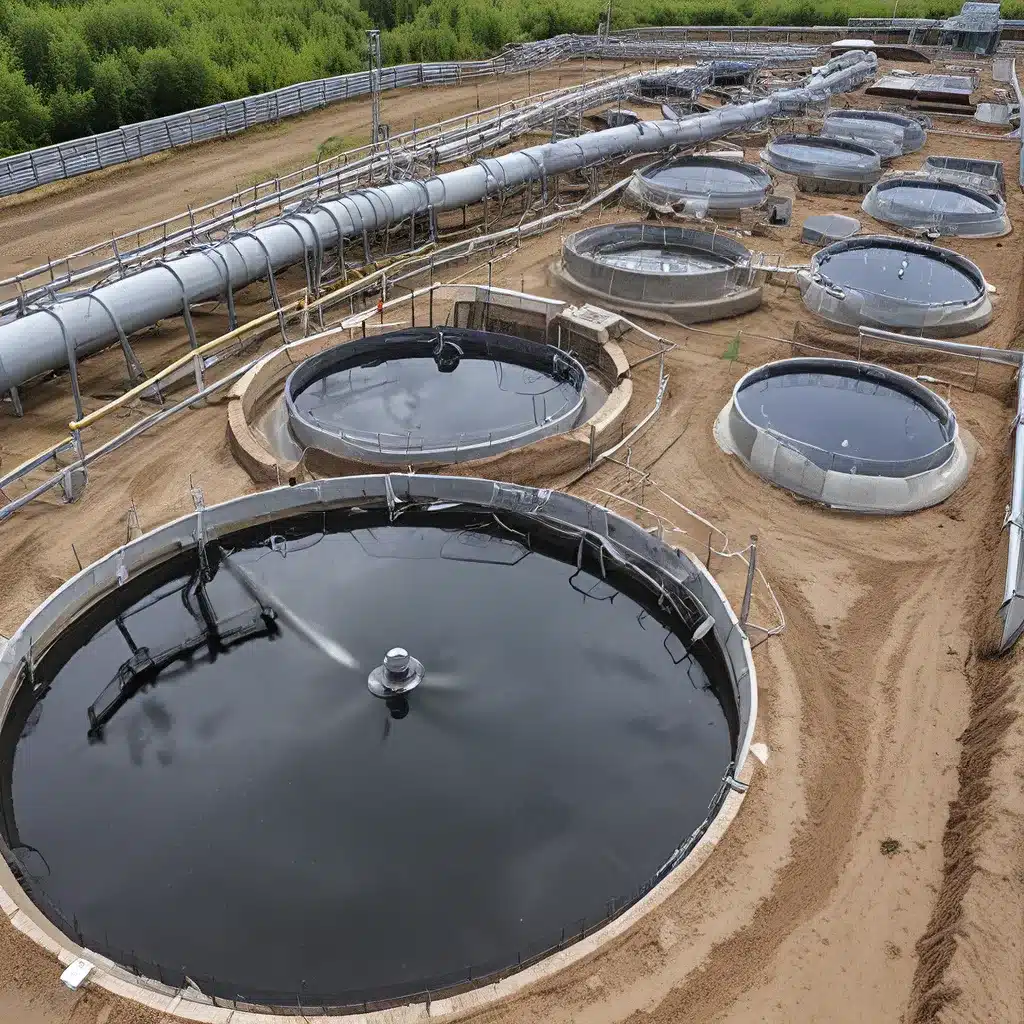
Ah, the curious case of wastewater – the forgotten treasure trove of untapped energy potential. You see, while most of us flush and forget, there’s a whole world of renewable power hiding in those pipes, just waiting to be harnessed. It’s time to shed some light on this hidden energy source and explore how renewable energy is revolutionizing the world of wastewater treatment.
Flushing Away our Energy Woes
Let’s be real – the world’s insatiable appetite for energy is growing by the day. As our populations expand and our cities become ever more vibrant, the demand for reliable, clean power is at an all-time high. But what if I told you that the solution to our energy woes might be lurking right beneath our feet?
According to the World Resources Institute, wastewater – the dirty, smelly stuff that gets flushed down our toilets every day – is a goldmine of renewable energy potential. You see, when all that organic matter decomposes in an oxygen-free environment, it releases a methane-rich gas called biogas. And this biogas, my friends, can be captured and used to generate electricity, heat homes, and even power vehicles.
It’s a true game-changer, this idea of transforming our waste into a valuable energy source. Suddenly, what we once saw as a nuisance becomes a renewable asset, a way to tackle our energy woes while also reducing greenhouse gas emissions. It’s a win-win situation, and it’s happening at wastewater treatment plants across the globe.
Poop to Power: The Rise of Sludge-to-Energy Systems
Picture this: you’re sitting on the throne, doing your business, when suddenly inspiration strikes. “What if we could turn this very poop into power?” you wonder. Well, my friends, that’s exactly what’s happening at wastewater treatment plants that have adopted sludge-to-energy systems.
Take the city of Portland, for example. They’re leading the charge in turning their wastewater into a renewable fuel source. Through their “Poop to Power” project, the city’s main treatment plant is now capturing and cleaning almost 100% of the biogas produced in their digesters. This renewable natural gas, or RNG, is then used to fuel the city’s vehicles, displacing dirty diesel and reducing climate-altering emissions.
But it’s not just Portland – sludge-to-energy systems are popping up all over the world. According to the World Resources Institute, the United States, China, Brazil, Argentina, and Norway are just a few examples of countries that are harnessing the power of wastewater. In fact, one plant in Xiangyang, China was able to produce enough compressed natural gas to meet the daily energy needs of 300 cars!
The Triple Win of Wastewater-to-Energy
So, what’s the big deal about sludge-to-energy systems? Well, my friends, it’s all about the triple win. These innovative systems tackle three of the world’s most pressing challenges: energy production, emissions reduction, and waste management.
First, the energy production angle. As the world’s population continues to grow and our cities expand, the demand for reliable, renewable energy sources is higher than ever. And that’s where wastewater comes in. By turning the organic matter in our sewage into biogas, we can generate electricity, heat, and even fuel for our vehicles – all while reducing our reliance on fossil fuels.
But the benefits don’t stop there. Sludge-to-energy systems also play a crucial role in emissions reduction. Methane, the primary component of biogas, is a potent greenhouse gas – about 30 times more powerful than carbon dioxide. By capturing this methane and using it for energy, we can drastically reduce the amount of this climate-altering gas that escapes into the atmosphere.
And lastly, these systems provide a much-needed solution to the growing problem of waste management, especially in developing countries. In China, for example, over 70% of municipal solid waste and sludge is either landfilled or dumped, often illegally. Sludge-to-energy systems offer a way to properly manage this waste, turning it into a valuable resource instead of letting it contaminate the environment.
The Renewable Energy Revolution in Wastewater Treatment
As the world continues to grapple with the challenges of energy production, emissions reduction, and waste management, the role of renewable energy in powering wastewater treatment plants is becoming increasingly crucial. And the good news is, this revolution is already well underway.
Just take a look at what the city of Portland is doing. By investing in the infrastructure to capture and clean almost 100% of the biogas produced at their treatment plant, they’re not only generating renewable natural gas to fuel their vehicles, but they’re also creating a new revenue stream for the city’s ratepayers. It’s a true triple win, and it’s just the tip of the iceberg.
Across the globe, more and more wastewater treatment plants are following in Portland’s footsteps, embracing the power of renewable energy to transform their operations. The World Resources Institute estimates that by 2020, waste-to-energy systems in China alone will have reduced emissions by 20 million tons of CO2 – an amount equivalent to the annual emissions of 4 million cars.
It’s an exciting time, my friends, as we witness the convergence of wastewater treatment and renewable energy. Who would’ve thought that the key to our energy and environmental woes might be found in the very stuff we flush down the drain every day? But that’s the beauty of it – by embracing the power of renewable energy, we can turn our wastewater into a valuable resource, powering a more sustainable future for all.
So, the next time you’re sitting on the throne, take a moment to appreciate the revolutionary potential of your, uh, contribution. Because in the world of wastewater treatment, the future is looking brighter than ever, all thanks to the power of renewable energy.


